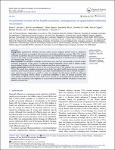A systematic review of the health economic consequences of quadrivalent influenza vaccination
Boer, Pieter T. de
Maanen, Britt M. van
Damm, Oliver
Ultsch, Bernhard
Dolk, Franklin C.K.
Crépey, Pascal
Pitman, Richard
Wilschut, Jan C.
Postma, Maarten J.
Background: Quadrivalent influenza vaccines (QIVs) contain antigens derived from an additional influenza type B virus as compared with currently used trivalent influenza vaccines (TIVs). This should overcome a potential reduced vaccine protection due to mismatches between TIV and circulating B viruses. In this study, we systematically reviewed the available literature on health economic evaluations of switching from TIV to QIV. Areas covered: The databases of Medline and Embase were searched systematically to identify health economic evaluations of QIV versus TIV published before September 2016.A total of sixteen studies were included, thirteen cost-effectiveness analyses and three cost-comparisons. Expert commentary: Published evidence on the cost-effectiveness of QIV suggests that switching from TIV to QIV would be a valuable intervention from both the public health and economic viewpoint. However, more research seems mandatory. Our main recommendations for future research include: 1) more extensive use of dynamic models in order to estimate the full impact of QIV on influenza transmission including indirect effects, 2) improved availability of data on disease outcomes and costs related to influenza type B viruses, and 3) more research on immunogenicity of natural influenza infection and vaccination, with emphasis on cross-reactivity between different influenza B viruses and duration of protection.
No license information

